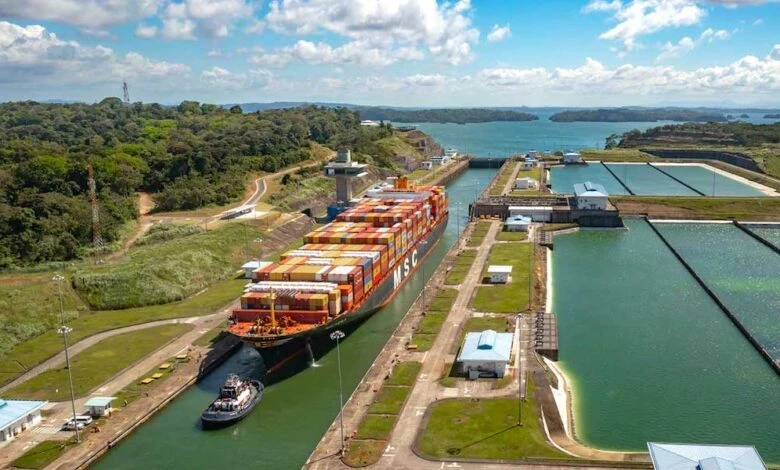Global shipping bodies have been urged to come together to share transit plans at one of the world’s key maritime chokepoints with officials at the Panama Canal Authority warning yesterday that water-conserving measures will be in place for at least the next 10 months.
Faced with an unprecedented drought this year, combined with the onset of the El Niño weather phenomenon, administrators at the Panama Canal have cut the draft restrictions for ships transiting its larger neopanamax locks by 2 m as well as slashing the volume of daily transits by 20% to just 32 vessels a day. These measures have seen ships backing up in significant numbers at either end of the canal. Today’s official total count is 129 ships, down from the peak of 165 earlier this month, but still 43% higher than the average.

The canal’s deputy administrator, Ilya Espino, told Reuters yesterday the restrictions would remain in place for at least the next 10 months, as such throughout the first half of next year.
Container services and cruise itineraries tend to transit the canal with long advanced bookings. For bulk sectors, it is more ad hoc and with shorter notice, and it has been here that the impact has been greater this month, where it might not be possible to obtain an advanced booking and therefore joining the queue is necessary.
For containerships, for the largest ships which will likely continue to have draft restrictions that means that around 2,500 teu of space cannot be utilised and therefore a maximum headhaul utilisation of 84%. For those 12,000 teu+ ships, re-routing via Suez would be one option that many liners will now be looking at given the official line from Panama that the restrictions are here to stay.
For smaller containerships, which can still pass fully laden, a backhaul return to Asia via the Suez or the Cape with a slightly longer distance and time is another option liners will be looking at to reduce overall Panama demand while also soaking up capacity at a time where container fortunes are widely perceived to be on the wane through to at least the end of next year.
